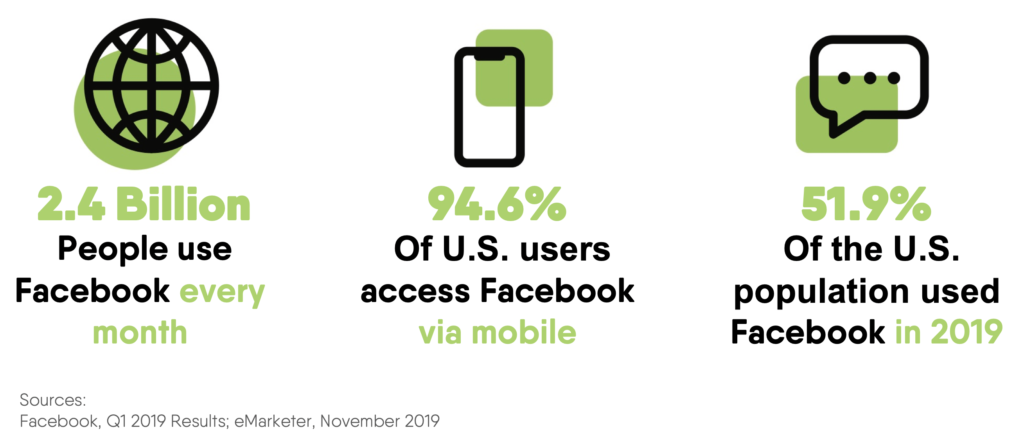Contributed by Tom Palmier, Mindstream Media Group Account Director. Tom has been consulting with brands and business partners on their digital advertising since 2006.
—
To help our client brand and CMO partners strategically navigate their marketing through the novel coronavirus crisis, Mindstream Media Group created what we’ve dubbed “rebound teams.” These agency teams pair our media professionals with individuals from a variety of disciplines and client teams to gain a fresh perspective and devise unique strategies for their clients post-virus.
I’ve been lucky enough to participate in a couple of these teams and noticed common themes developing across client industry verticals and topic groups. Not all of these topics apply to every industry and some may weight each topic differently. We realize each individual client is different, but the topics below represent challenges seen across all industries.
Might – Advertisers might want to rethink who their target audience is during this unique time. Brands might consider letting current customers know what they are doing to prevent the spread of COVID-19 or what they are doing in the community to help fight back. Are you open for online orders or curbside to go? “During this time in which the restaurant industry has seen huge declines in dine-in volume, it is encouraging that more than half of our respondents said they are maintaining or increasing their takeout and delivery spend,” said Cindy Judge, CEO of SRG in Ad Age. Let your most valuable customers know how they can do business with you and make it as seamless as possible. Brands might also consider pausing testing new audiences or conquesting and focus instead on core audiences and loyal customers.
May – Marketers may consider re-aligning their media mix to match changing consumer consumption behaviors. For instance, studies are showing radio, billboards and other OOH media are seeing a decline in viewership while traditional TV, connected TV, as well as social media and online video, have seen an increase in time spent with media. Comscore has released multiple studies on media consumption habits and how they have rapidly evolved since quarantines began.
- Television has become a core source of news, information and entertainment.
- In-home data usage is on the rise thanks to millions of adults being at home and schools shutting down.
- Analysis of digital consumption has revealed a shift in category trends.

Advertisers, if not already, should consider these changing consumption patterns when deciding how to best utilize their media investments. Many marketers have already shifted media budgets according to the IAB, “More than a third (35 percent) of advertisers are adjusting their in-market tactics and are increasing: Audience targeting (+38 percent), OTT / CTV device targeting (+35 percent), Mobile/Tablet device targeting.”
Must – As a brand or CMO, you must be thinking about messaging. How can you convey that you understand your target’s perspective? Not just say, but convey your experience, leadership and ability to weather the storm. According to the IAB, “The majority (63 percent) of advertisers are adjusting their messaging and are increasing: mission-based marketing (+42 percent) and cause-related marketing (+41 percent).”
Messaging must change if it’s currently focused on in-store visits, for example, and focus instead on an easy online shopping experience. For others, the message may be to not have an offer or call to action, and simply let the community know how you are responding. No brand wants to be seen as taking advantage of a crisis or drawing unnecessary crowds with a big sale. Telecommunications industry leaders like AT&T and Verizon are responding with unique messages for this time any many carriers have added extra data to plans in response to the crisis.
Messaging must convey empathy first, then value. Here are some guidelines to help marketers think about messaging during this time.
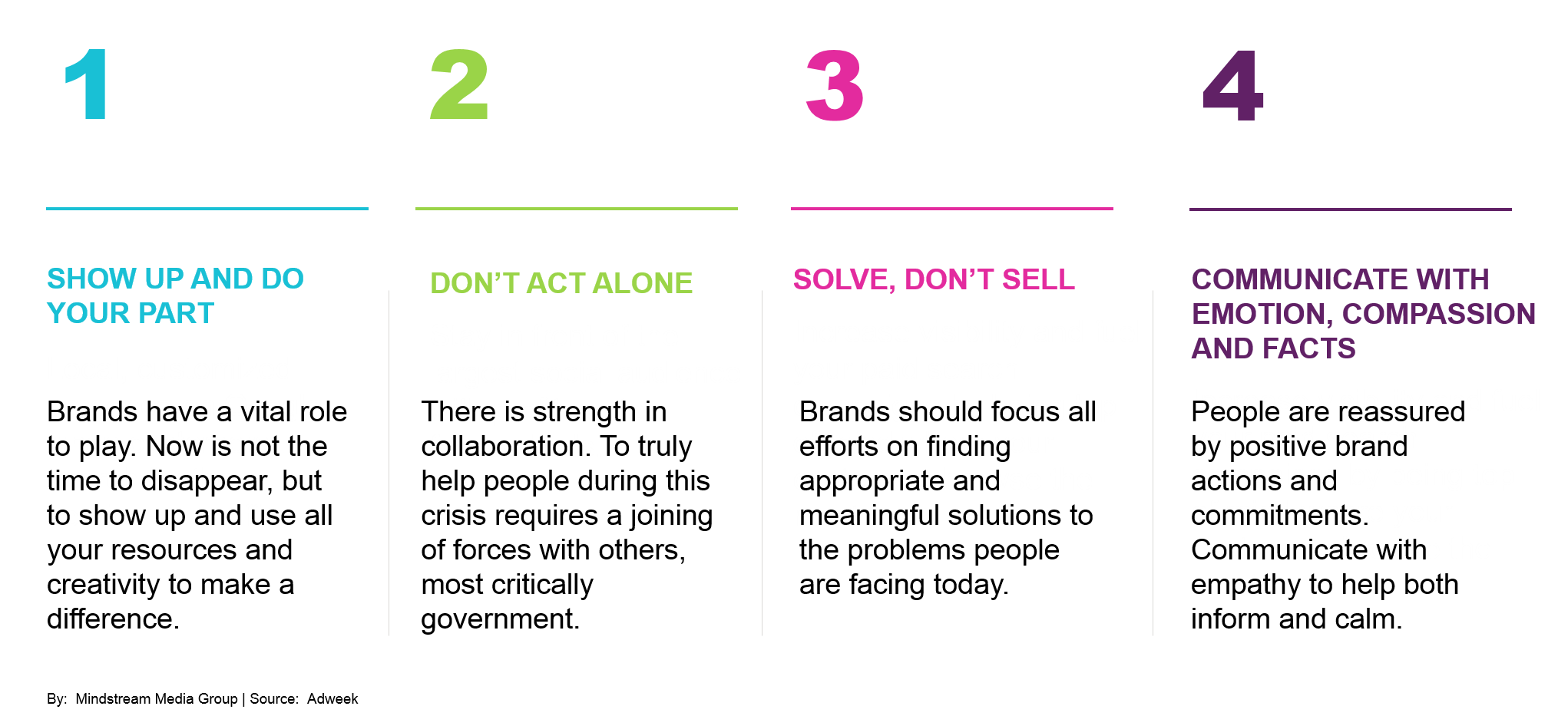
Over time, these pivot points may change, and we may go back to our pre-crisis marketing plans, but for now, we must revisit our strategies and refocus our message. If possible, marketers should consider re-allocating media budgets to take advantage of increasing digital and in-home media consumption and have a plan to thoughtfully engage with your current customers now and post-crisis.
Marketers who stay quiet or withdraw during this time will have some catching up to do once this has passed in terms of messaging. Agencies who lean into this challenge and help their clients navigate this experience will solidify partnerships and strengthen brands for years to come.




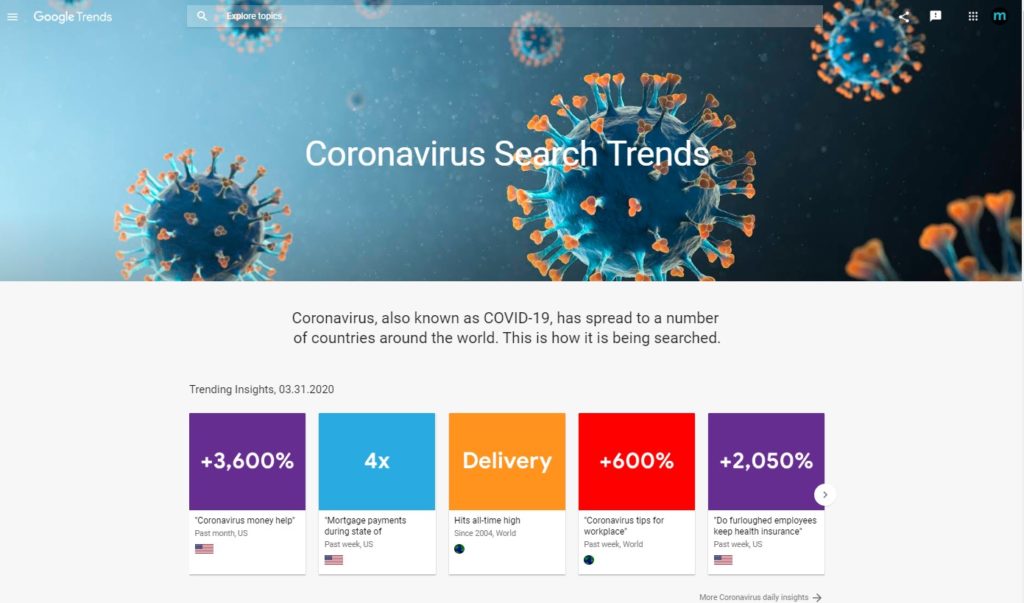
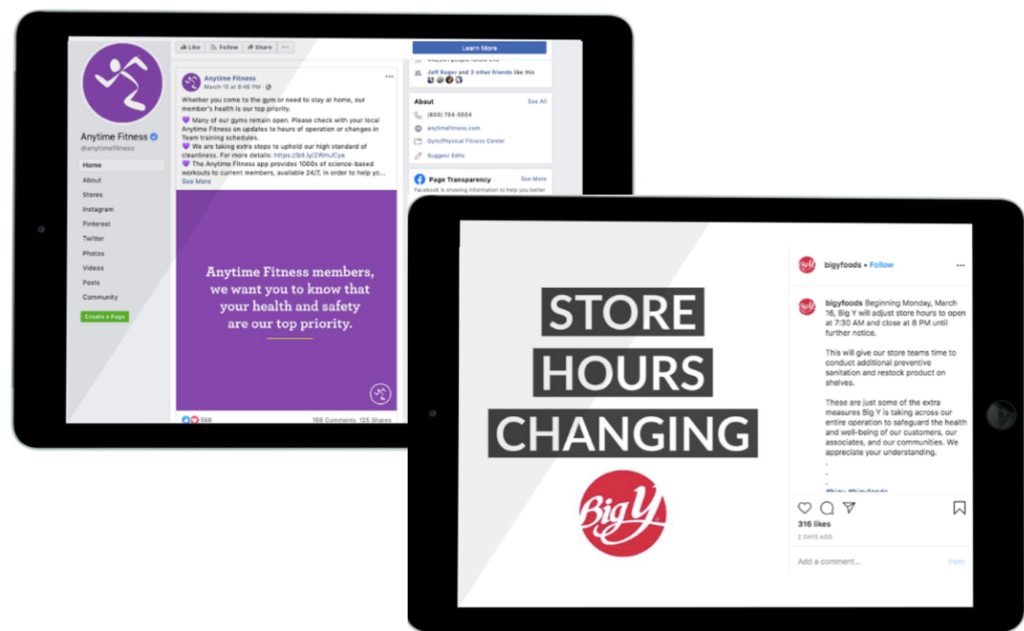
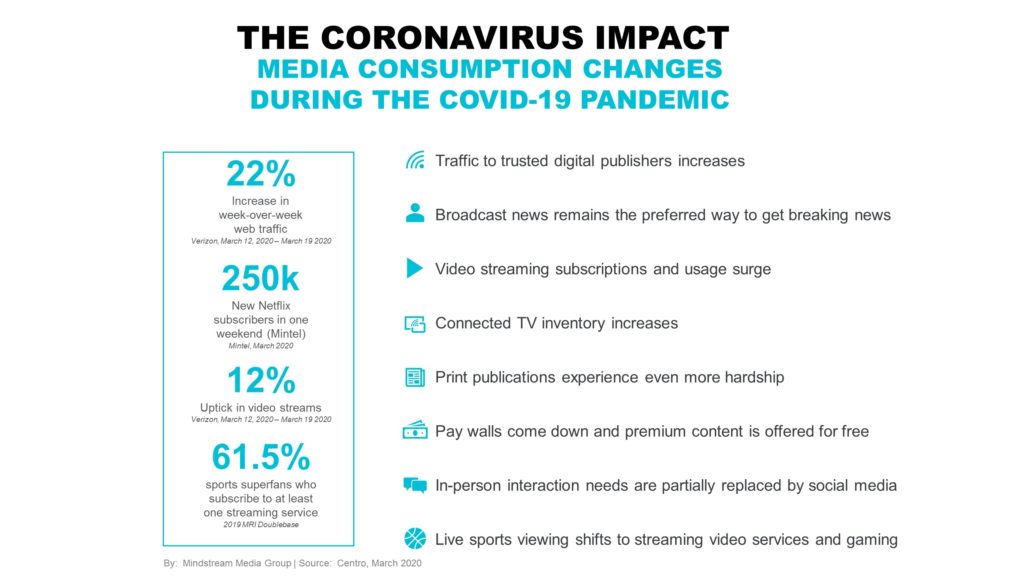

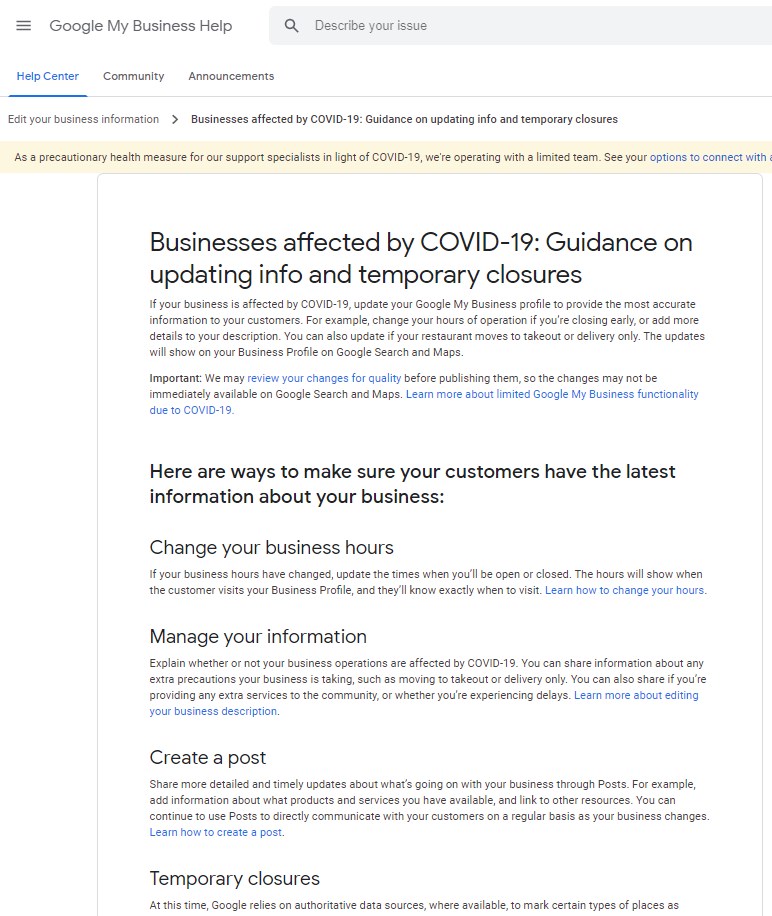
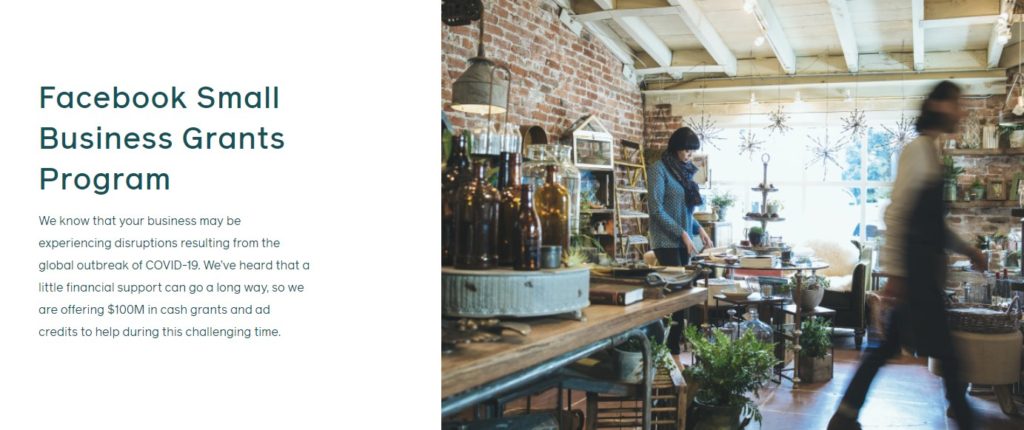
![[Case Study]: Proactive Campaign Management Prompts Restructure – Results In 426% Lift In Conversions](https://mindstreammediagroup.com/wp-content/uploads/2019/12/EJ-Feature.jpg)

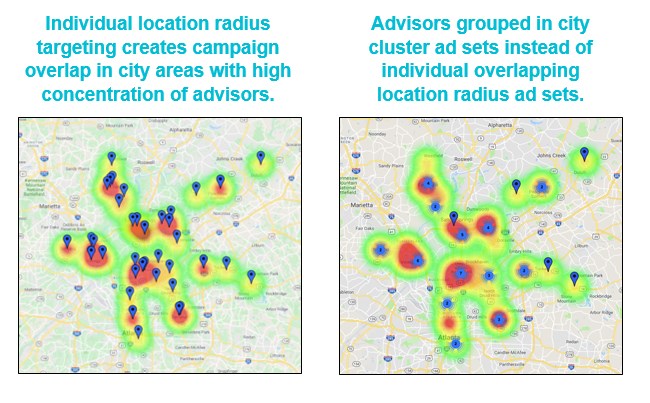
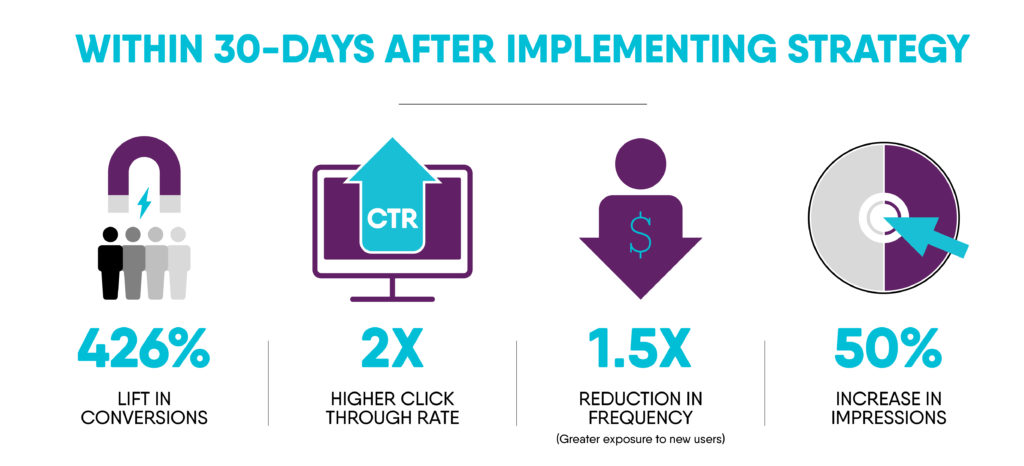
![[Case Study]: GoWireless Partners with Mindstream, Boosts In-store Sales with Facebook Offers](https://mindstreammediagroup.com/wp-content/uploads/2017/06/Facebook-Case-Study-feature-image.png)
